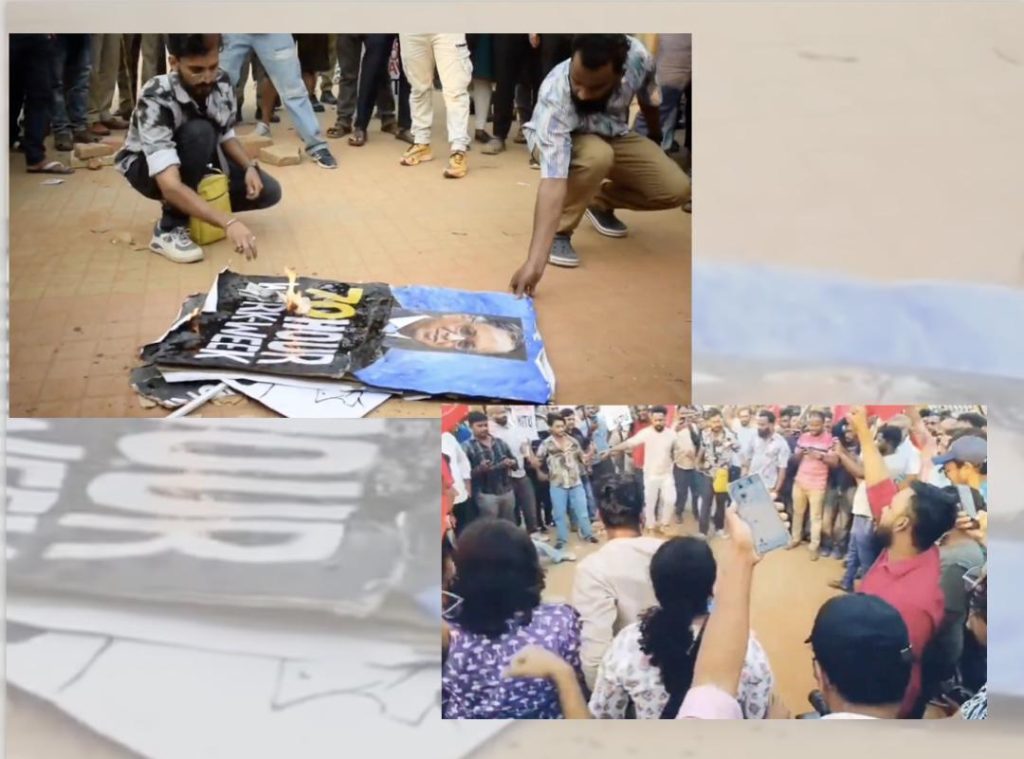
IT Employees Burn Murthy, L&T Chief’s Effigies for Proposing Longer Workweeks
The IT sector in Bengaluru has been in the midst of a heated debate over the past few weeks, with the proposal of longer workweeks by some of the industry’s top leaders sparking outrage among employees. Recently, IT employees in Bengaluru took to the streets to protest against exploitative work practices, with a dramatic twist – they burnt effigies of Infosys Founder Narayana Murthy and L&T Chairman SN Subrahmanyan.
The protest was organized by the Karnataka IT Unions (KITU), an IT employees’ union in Karnataka. The union has been vocal about the need for better working conditions and fair compensation for IT employees. The recent proposals by Murthy and Subrahmanyan, calling for 70-hour and 90-hour workweeks respectively, have been seen as a direct attack on the well-being and happiness of IT employees.
According to reports, the protest began with a peaceful rally in the heart of Bengaluru, with hundreds of IT employees participating. The protesters carried placards and banners denouncing the proposals and demanding better working conditions. However, things took a dramatic turn when a group of protesters, feeling frustrated and angry, decided to take matters into their own hands.
Despite the presence of Bengaluru Police, the protesters managed to burn effigies of Murthy and Subrahmanyan. The police, who had been trying to maintain order, were caught off guard by the sudden turn of events. The protesters, however, remained defiant, chanting slogans and waving placards as they went about their protest.
The proposal by Murthy, who is known for his no-nonsense approach to business, had sparked widespread outrage earlier this month. During a conference, he suggested that IT companies should consider introducing 70-hour workweeks to stay competitive in the global market. While some saw it as a pragmatic solution to the industry’s growth challenges, many others were appalled by the idea of asking employees to work longer hours without adequate compensation.
Subrahmanyan, the Chairman of L&T, also weighed in on the issue, suggesting that employees should be prepared to work 90 hours a week to stay ahead of the curve. His comments were seen as a direct challenge to the IT industry’s traditional 9-to-5 work culture, and many employees felt that it was an unnecessary burden.
The reaction to both proposals has been overwhelmingly negative, with many IT employees taking to social media to express their outrage. The proposals have also sparked a wider debate about the treatment of IT employees in India, with many calling for better working conditions and fair compensation.
The protest by KITU, therefore, is seen as a major step forward in the fight for better working conditions in the IT sector. The union has been vocal about its demands for better pay, more holidays, and a reduction in workload. The burning of effigies is seen as a symbolic act of defiance against the industry’s top leaders, who are seen as out of touch with the reality of working life.
While the protest may have been dramatic, it is clear that IT employees in Bengaluru are not alone in their demands for better working conditions. The debate over longer workweeks is just one aspect of a larger struggle for fair compensation and better treatment of IT employees in India.
In the words of KITU’s General Secretary, “We are not asking for the moon. We are asking for basic human rights. We want to work in an environment that respects our well-being and happiness. We will not be silenced by the proposals of industry leaders who are more concerned about profits than people.”
As the debate continues to rage on, it remains to be seen how the industry will respond to the demands of IT employees. One thing is clear, however – the IT sector in Bengaluru will not be the same again. The burning of effigies may have been a dramatic act of protest, but it has also sparked a wider conversation about the treatment of IT employees in India.



